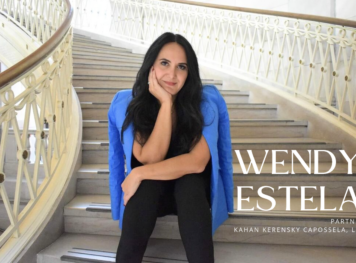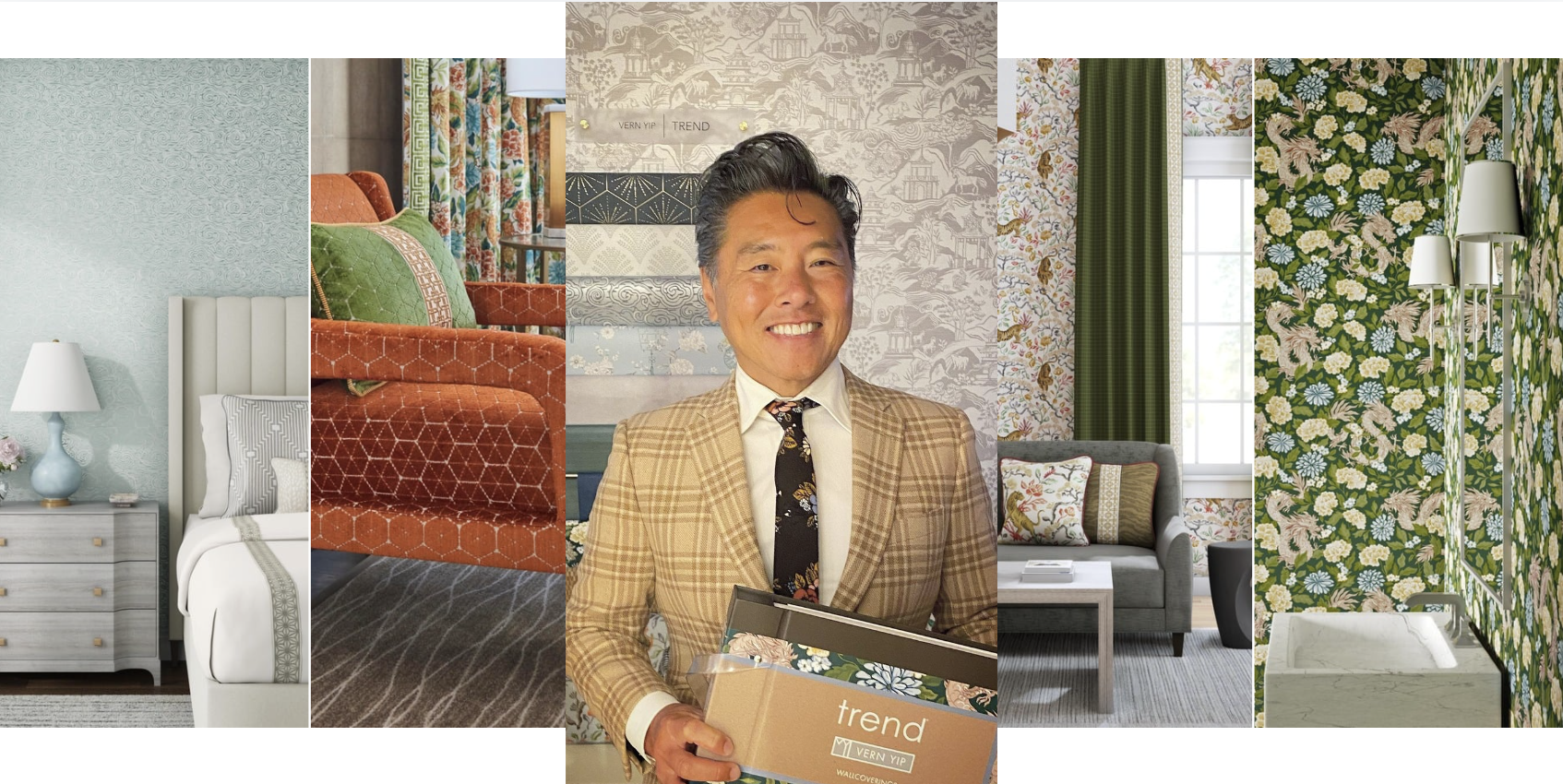
By Lindsay Field Penticuff
Vern Yip is not just the incredibly talented interior designer and TV host we’ve all come to love.
He’s also a New York Times’ best-selling author, loving husband and father, product designer, dog dad and UNICREF ambassador.
And I bet many of you weren’t aware that he didn’t even study interior design in college. He actually majored in chemistry and economics in undergrad at the University of Virginia (UVA), and later earned a Master of Architecture and Master of Business Administration (MBA) from the Georgia Institute of Technology in Atlanta, which is where he and his family call home today.
“My parents fled communist China and moved to the United States when I was just a baby,” Yip shares. “I very much wanted to be an obedient son and thank them for all the sacrifices they had made on my behalf.
“Like so many Asian families, the choices are to be a doctor or to be a doctor, so I was a pre-med student at UVA, and then I got into med school. About two months before med school was going to start, I finally worked up the courage to tell my folks that I’ve known my whole life I’m supposed to design and that I really didn’t want to go to med school.”
Yip says he ended up applying for the Master of Architecture program at Georgia Tech, where he became somewhat of a guinea pig.
“They tested me out on a dual MBA/Master of Architecture program, because I was wanting to make sure my parents weren’t stressed if I didn’t make it in architecture—that I’d have something to fall back on,” he adds.
Out of college, he landed a job at one of the largest architecture firms in the Southeast as an intern, and that’s when he met the head of interior design who, Yip says, “had a hunch about me.”
“She thought I’d be an amazing interior designer and wanted to give me a break, so she gave me the corporate headquarters for Disney Cruise Line to design, and it changed my life,” Yip says. “It was a huge risk on her part, but she saw something in me.”
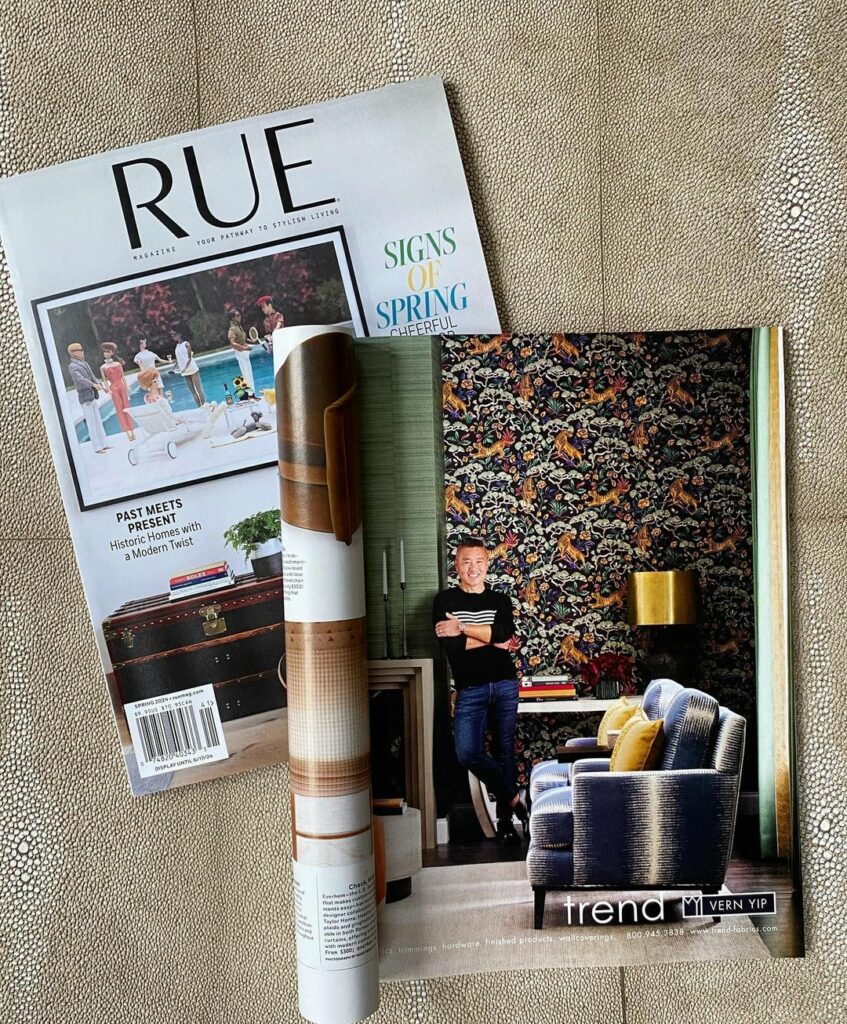
He went on to earn his interior design certification, as well as became a registered architect, and he eventually went out on his own in 1999. One year later, Yip was named Southeast Designer of the Year, and that brought him to the attention of the folks on the TLC channel, which produced “Trading Spaces.”
Today—and with almost 30 years of interior design experience on his resume—Yip continues to design some of the most beautiful spaces around the world, is still hosting TV shows for the likes of the Magnolia and HGTV channels, has written two books and is celebrating his 10-year anniversary collaborating with Fabricut’s Trend, offering a selection of fabrics, trimmings and wallcoverings.
We had the pleasure of interviewing Yip recently, picking his brain about all things interior design, TV hosting, writing and his collection with Trend. Scroll down to learn more!
Could you reflect on your experience working in TV over the years and how being part of a network has impacted your career and approach to design?
“I’ve always kind of enjoyed the idea that as a designer I can be a broader-known quantity to a wider audience that really is craving how-to information and trying to understand how to make their homes more reflective of them. They may not have the resources to hire an interior designer to come help them, so this (working in TV) is an awesome way to kind of help everyone live their best lives by having a wider platform and getting information disseminated on a wider basis. I really like having all these different points of views, and I think they help inform me about what I do.”
In your experience, do you find that it’s unique to have a background in architecture and interior design?
“I feel pretty unique. I don’t see a lot of it, and what’s so great is that I think having both the architecture and interior design perspectives make me an infinitely better product designer when I design these collections—the fabrics, wallpapers, trim, light fixtures. There is a surprising amount of architecture that seeps into interior designer, so for me, I’ve always felt so incredibly lucky to have that varied experience.”
You’ve authored several books, including “Design Wise” and your latest release, “Vacation at Home.” Can you share what inspired you to become an author, and how do you believe your books contribute to the conversation surrounding interior design and home improvement?
“I’ve always loved writing. It’s always been something I’ve viewed as a creative outlet, so even before I started working on my first book, I had started writing for The Washington Post in 2011. At that point in my career, I had been a pretty well-known quantity and people were always asking why I hadn’t put out a book. I feel strongly about what I put out into the universe, whether it’s a book or product. I want it to be purposeful and for there to be a need for it to be fulfilled. I want it to be useful and not just another element to end up in a landfill.
“When I was looking at the world of books in the design space, I found that design books fell into one of two categories: vanity tones, where it’s a lot of images (and I love those kinds of books as much as anybody, because you can flip through them for inspiration), or books that had a lot of information, but the information as often really varied in paragraphs and it required a real commitment from the reader, who I believe just wants to know how to get from point a to point b pretty easily. They may want a bulleted list rather than five pages of paragraphs to figure out how high to hang a picture in their house.
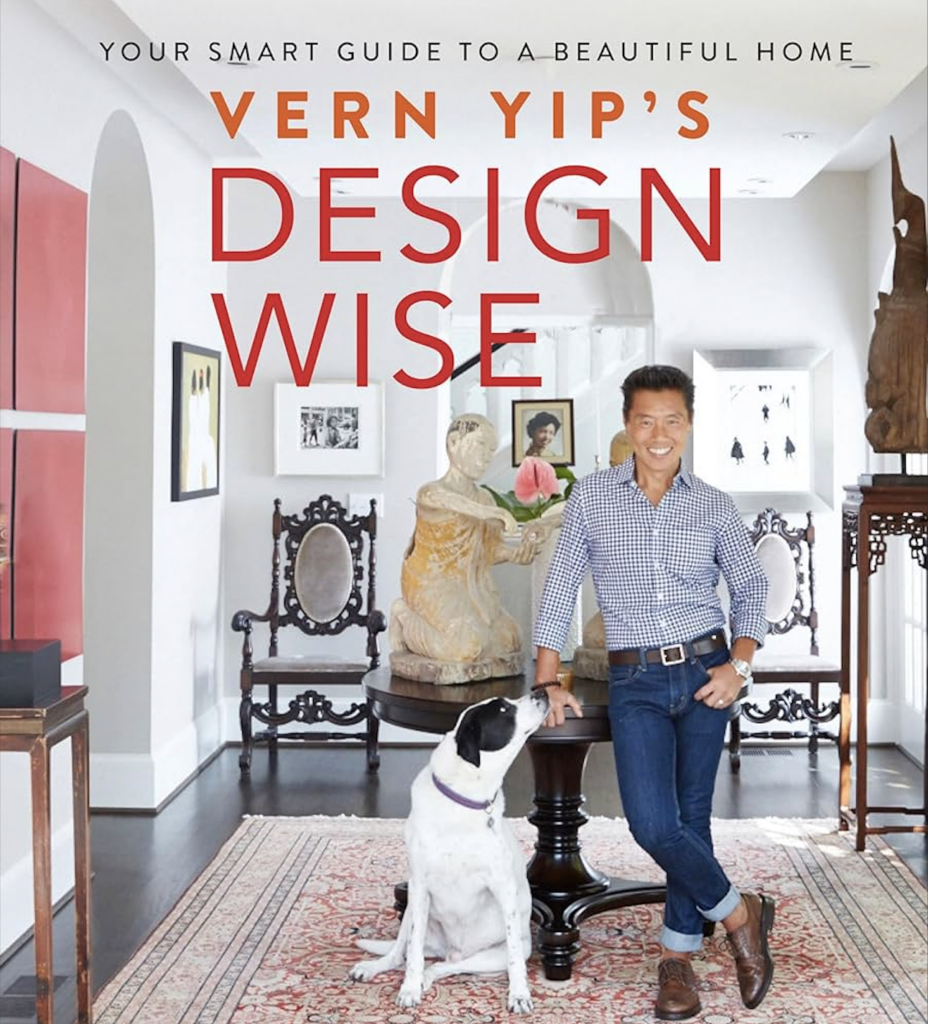
“I had a lightbulb moment in 2014, when I started working on my first book, ‘Design Wise,’ that it takes a lot of critical design information that’s kind of universally applicable (whether you live in a tiny apartment or mega mansion), the scale of furniture and the scale of things we access. The most common question as designer I get is, ‘How high do I hang the picture in my house?’ The answer is 60 inches from finished floor to the center of the pictures, or the grouping of the picture, unless it’s over a fireplace mantle or headboard. And we say 60 inches, because it’s the average human eye level. It doesn’t matter if you have 8- or 15-foot ceilings, you don’t hang your art higher up on the wall. Art is meant to be viewed and enjoyed.
“It’s that kind of critical information that I felt people were looking for, so my first book really delivered it in a bullet-point fashion, so that people could get it in nuggets, very quickly and not feel like they had to go to design school to figure out how high to hang the toilet paper holder in their bathroom. The second part of the book does have inspirational pictures, but I wanted it to meet in the middle space, which I didn’t see in the marketplace.
“It became a New York Times’ best-seller, which was always a dream of mine to make that list. It also really opened another career path for me to write books, so I put out my second book at the end of 2019, and I’m now working on my third book now, which is scheduled to come out in the fall of 2025.”
You’ve mentioned the importance of setting a foundation for a well-designed home, such as using durable materials and performance fabrics. How do these choices contribute to the longevity and usability of a space?
“I designed spaces 10-15 years ago that are still intact and still look great. If you do it right, and as a designer, if you are taking the time to listen and figure out who your clients are, you can deliver a product that is functionally supportive of their life and aesthetically reflective of who they are, and not just of trends ‘of the moment.’ When you really tailor a home functionally and aesthetically, it has the possibility of enduring for a very long time.”
Your collaboration with Fabricut brought accessible design to a wider audience through your collection of fabrics and trimmings. How do you approach designing products that balance both style and affordability, and what do you hope to achieve through this partnership in terms of making design more accessible to everyone?
“This is my 10-year anniversary, which I feel so lucky to be able to say. Anyone who has ever dipped their toe into branding or product design knows that talent is not enough. There has to be a huge team of folks who make something successful from a marketing standpoint, from a data standpoint and from so many different angles.
“When I began talking to , they asked what brand I wanted to be in and, without hesitation, I said that I wanted to be in Trend, which is their entry-level brand. It’s because that’s where I saw the most opportunity and felt like I could make the biggest difference and contribute the most.
“For me, it’s really hard, but so fun—this idea of delivering fabrics, wallcoverings and trimmings that are of beautiful, high-quality and have all the design elements in them that are fabricated beautifully and have the details and to price it at the entry point for Fabricut. I think you can design really high-quality products that can be astronomically priced—that’s not very difficult. But it’s also not difficult to put out cheap product that’s inexpensive but also falls apart and contributes to our climate issue.
“The hard part is creating something that is going to last and make a difference in somebody’s life that’s well thought out, well designed and priced more attainably. That’s always been my mantra, and it’s the foundation of what I do. That’s also why I chose to go into the Trend brand. I just have so much respect for what so many different people bring to the table there to make something successful.”

In your latest book, “Vacation at Home,” you discuss the idea of turning one’s home into a personalized oasis. Could you share a bit about how you believe our living spaces can contribute to our overall well-being and sense of relaxation?
“There isn’t a more important space for the vast majority of us than our homes. It’s where we spend the most important moments of our lives with the most important people in our lives, and it should be a place that you’re so happy to see at the end of the day—not a stressor. It should be your safe space. My home is that way, and when I design homes for clients, it’s that way.
“I noticed there are a lot of people who were feeling super overwhelmed by the idea of their home, coming home and having a million things to take care of or address, and just feeling not completely comfortable in it. I put that book out as a reaction to this trend that I had seen of people (moving toward this era of minimalism).
“Marie Condo had a very effective philosophy of disposing of most of your things. I understood why it resonated with people, because they were feeling overwhelmed in their homes and their homes were not relaxing or rejuvenating; they were points of stress. But I felt like there was a better approach for me and my clients.
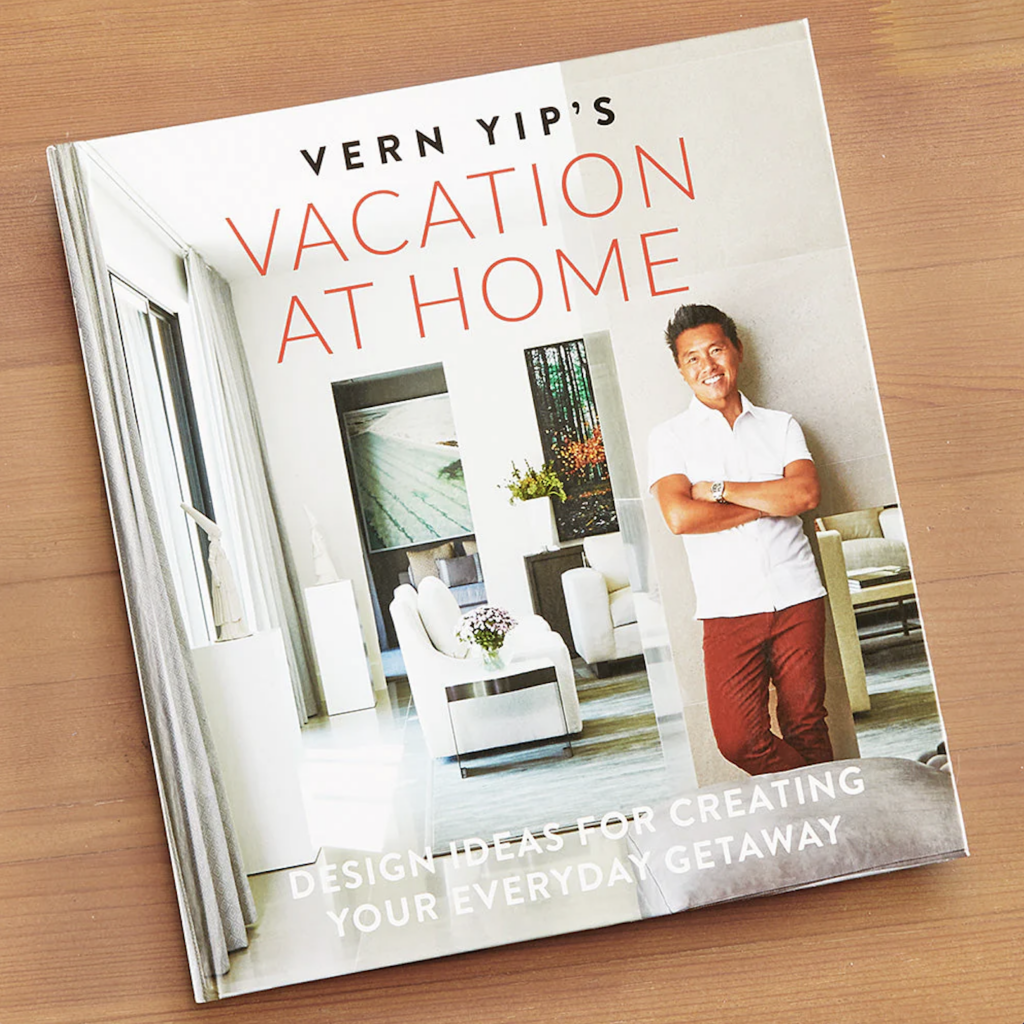
“That’s where the philosophy of ‘Vacation at Home’ came from. Something belongs in your home if: A) you really need it or B) you really love it. It’s not enough to just kind of like something, or to hang onto it because you purchased it for a lot of money, or someone gave you a gift and you don’t really love it but you love them and hang onto an item even though it’s not something you want to use or display.
“It’s this idea that every time you walk into your home, you should feel relaxed, rejuvenated and restored, and how you get there is really: A) culling everything down to what you need and what you love, and B) embracing what advancements in design and manufacturing now allow us to incorporate in our homes.
“You can get to that place where you’re not pining for the two weeks of vacation every year so you can walk into a beautiful hotel and decluttered room. You can pine to come home, and get relaxed and restored there.”
In addition to your design work, you’re also involved in various nonprofit efforts. How do you integrate your passion for philanthropy into your career as a designer?
“I’ve been a UNISEF ambassador for 15 years, and for 10 of those years, I designed the UNISEF Snowflake Ball. They are responsible for saving more children’s lives on this planet than any other nonprofit in the world, and I’m so proud to be able to say that. Design doesn’t just have to be about picking the right shade of green or fabric. Design can be used to change the world, and in a huge way. I have loved being a part of UNISEF, and I love using my design skills to help raise funds to help children all around the world. It’s been incredible! Being able to see that program at work and how those children benefit from the funds we raise.
“I’m also very passionate about pets and pet adoption. My husband is on the board of a nonprofit called LifeLine Animal Project, which runs the biggest animal shelters in the Atlanta area. (It’s also why we have seven adopted dogs.) I chime in with design advise when it comes to shelters, but I hosted a major fundraiser and emceed with my husband for the past two years, raising in one single night $630,000.
“We all share this planet together, and our actions impact each other. It’s important for designers to realize that as well. Your job doesn’t have to be viewed as superficial or just picking out something pretty or nice. Your job can have a huge impact on the lives of people who inhabit the project you work on, and you can use your skillset to even reach beyond that.”
With your extensive experience in television, writing, and design, what drives you to continue exploring new projects and sharing your expertise with others?
“I came out of the womb just a problem-solver. It’s what gets me up in the morning. It’s what gets me excited, and I like to solve problems from a creative standpoint. I think there are so many ways that can be applied. I’m very interested in changing the world and people’s lives for the better with my creative skills. I feel like that’s what I’ve been put on this planet to do; that’s what keeps me going.”
What advice would you like to share with new and seasoned interior designers?
“I tell young interior design students all the time when they ask me for advice: The most important thing is to get as educated as possible, because you have no idea where that knowledge base is going to take you and how it’s going to spark ideas in your brain. I don’t mean just in art, music, travel and fashion—all the things people want to study—but also in science, history, literature and even being up to speed on politics and current events. For me, these are also critical to how I design and how I think about design.”
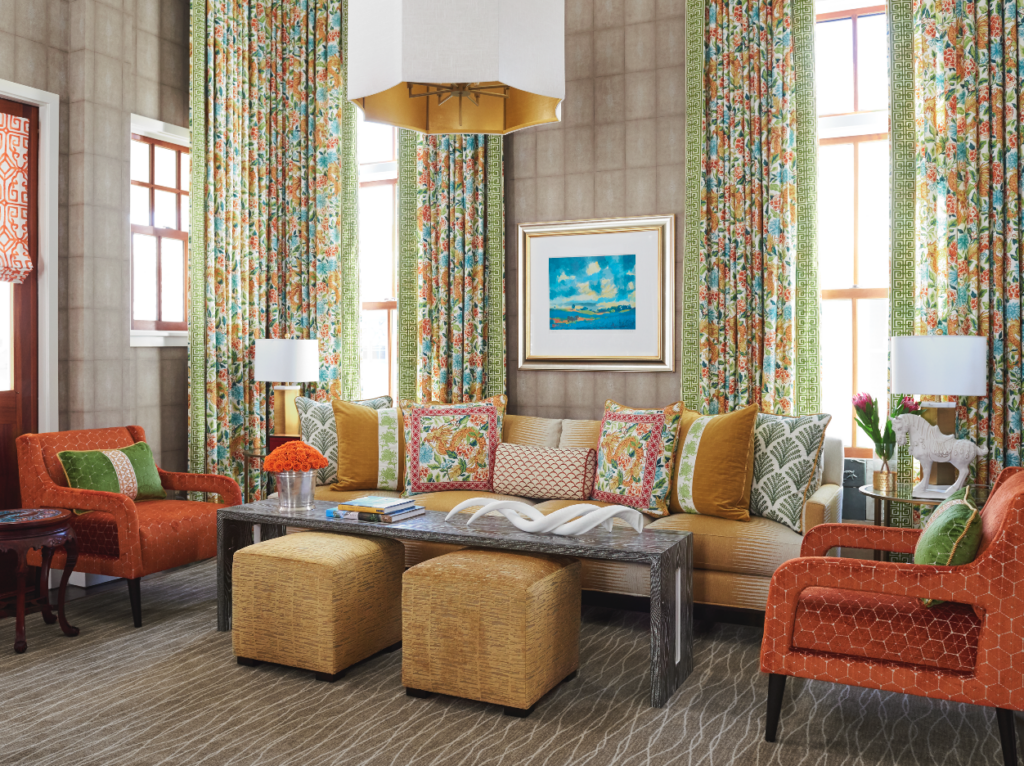
Stay inspired by following author and interior designer, Vern Yip, on Instagram for his latest design insights and projects. Don’t forget to explore his stunning collection with Fabricut—perfect for adding a touch of elegance to your next design venture!


